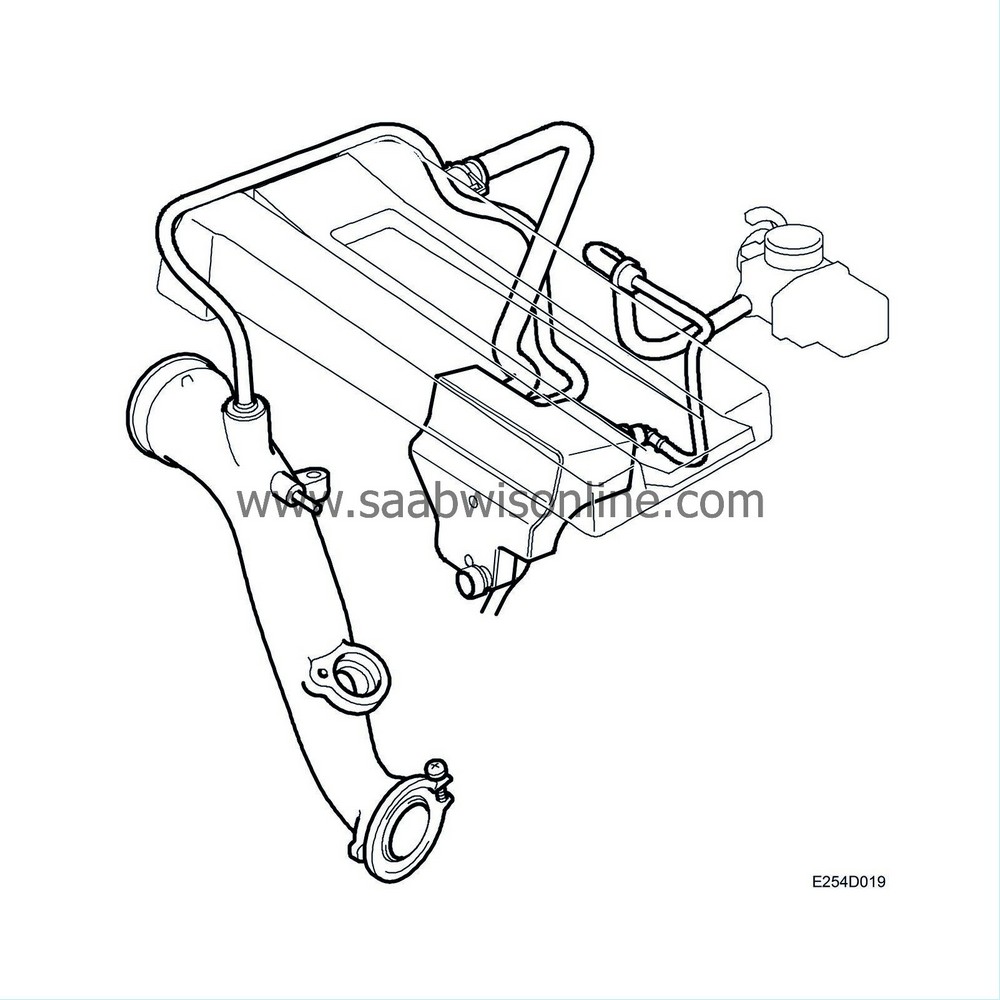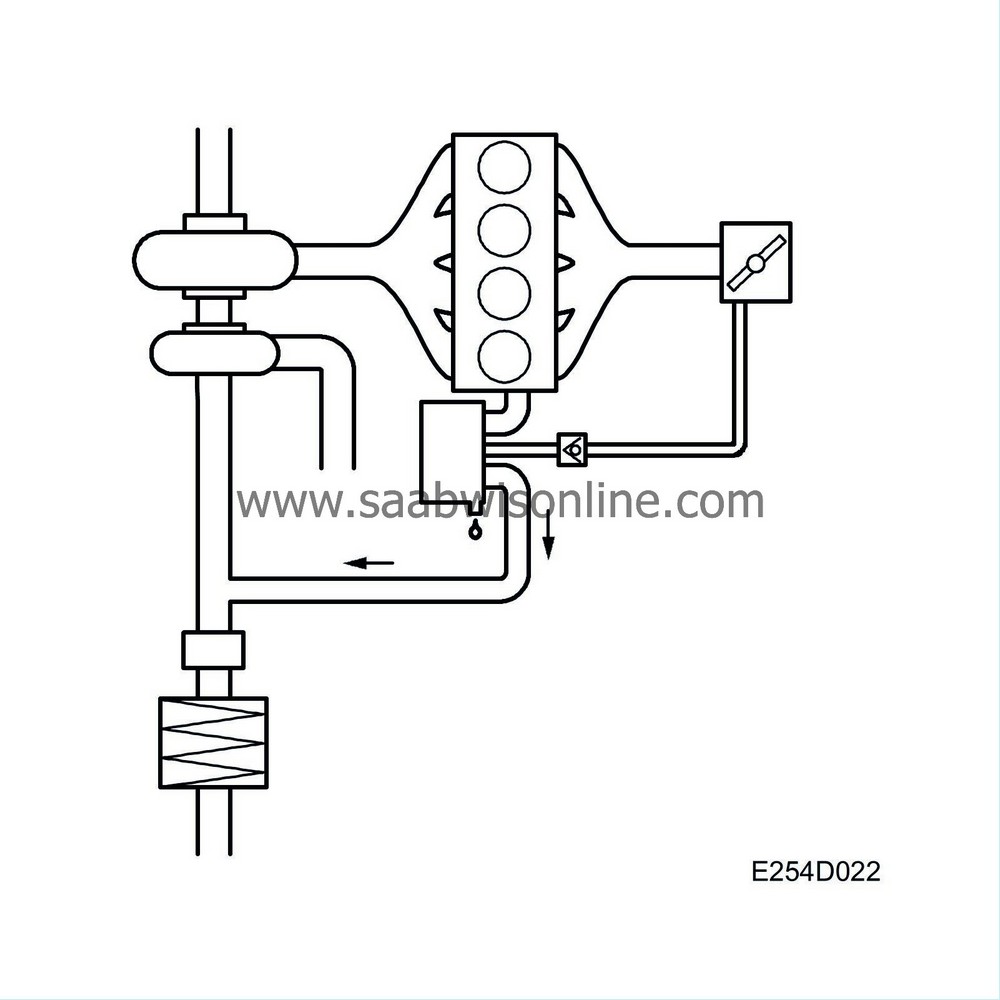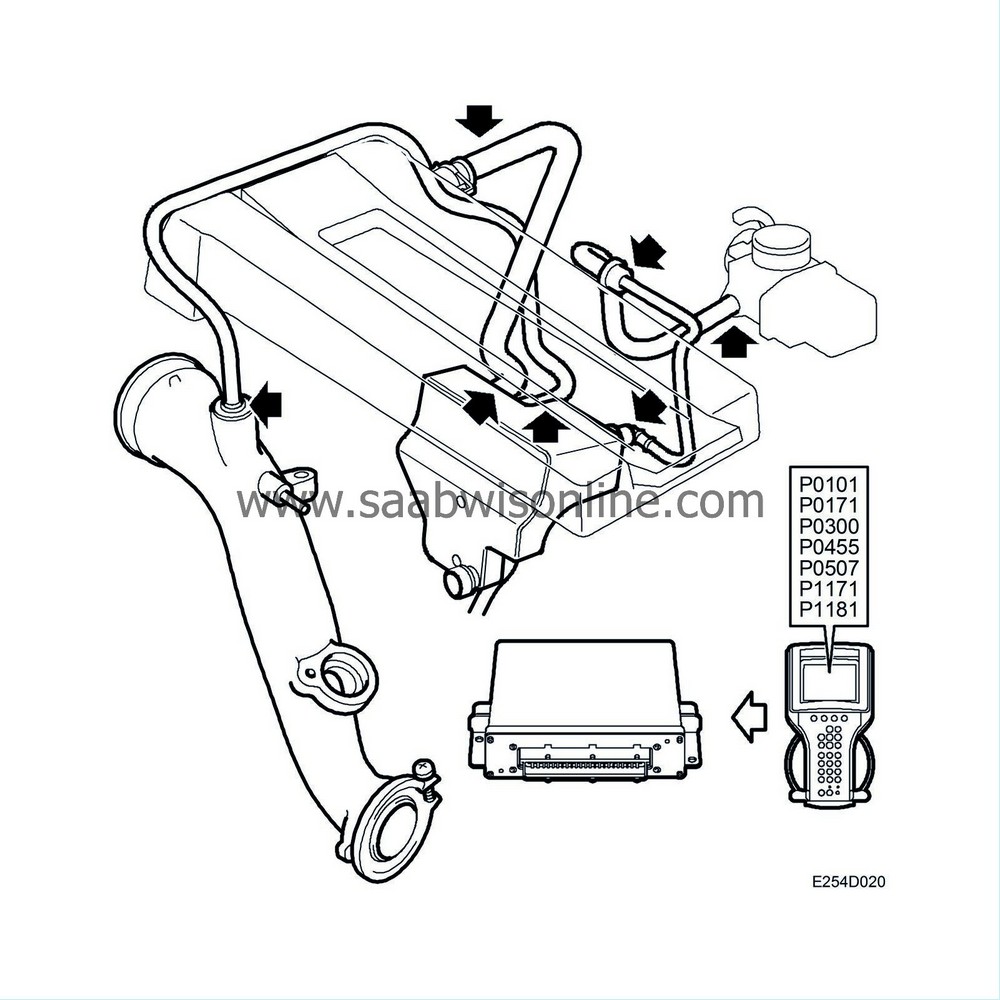Crankcase ventilation, 4-cyl.
| Crankcase ventilation, 4-cyl. |
General
This model year has a new crankcase ventilation system. The oil separation has been improved, the negative pressure in the crankcase is more even and the ventilation is more effective. Combined, this means that the service interval can be extended. The crankcase ventilation system has an external oil trap.
Function
The engine's crankcase ventilation is fully sealed. The ventilation has a connection by the camshaft cover. The crankcase gases are led from the camshaft cover via a polyamide hose to the external oil trap (1). The oil trap is mounted on the cylinder block and is connected to the crankcase via a hole in the side of the case. The crankcase gases are thus evacuated from the camshaft cover and the crankcase. The oil trap removes the oil from the crankcase gases. The oil runs down to a level below the level in the oil sump via a short return hose. The gases are led into the engine (2) for combustion in two different ways, depending on the operating conditions.
At low engine loads, when the pressure in the intake manifold is negative, the gases are led from the oil trap, up to a connection on the throttle body. (3) The gases are mixed with the intake air and combusted in the engine. The connection is after the throttle. The line has a check valve that prevents charge air from entering the oil trap when the pressure in the intake manifold is high, since this would pressurize the crankcase.

At high engine loads, when there is overpressure in the intake manifold, the check valve in the hose to the throttle body shuts. The gases are instead led via a hose from the oil trap to the turbocharger intake pipe. The gases are mixed with the intake air and then combusted in the engine. The hose is inserted in a connector that secures it to the turbocharger intake pipe. The hose extends into the airflow producing an ejector effect, which effectively draws the gases from the oil trap.
Since the oil trap is located on the back of the engine, it is kept warm, preventing the formation of ice.
Diagnostics
In the event of leakage, such as a hose in the crankcase ventilation system, one of the following fault codes is generated: P1181, P0171, P1171, P0507, P0101, P0300, P0455. If one or more of these codes exists, the integrity of the crankcase ventilation system must be check and if necessary rectified before continued fault diagnosis.


